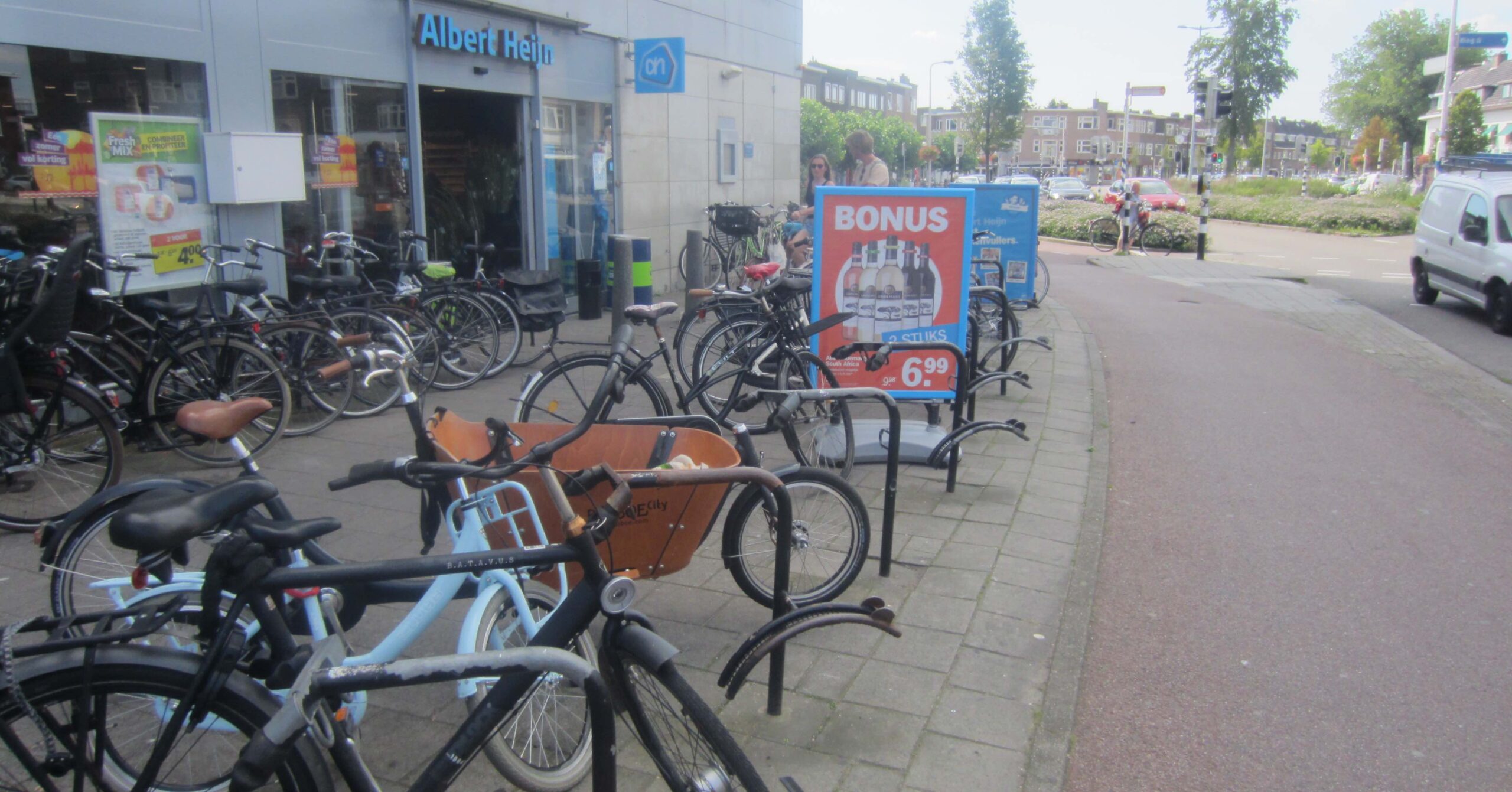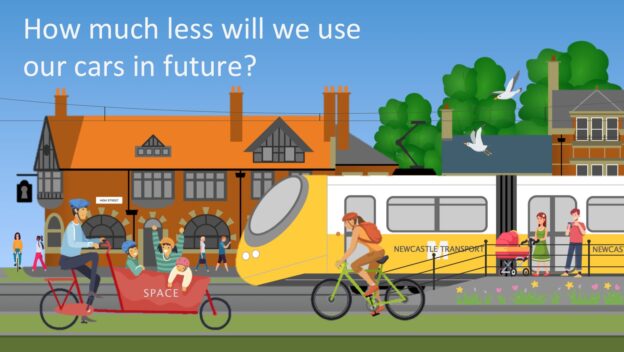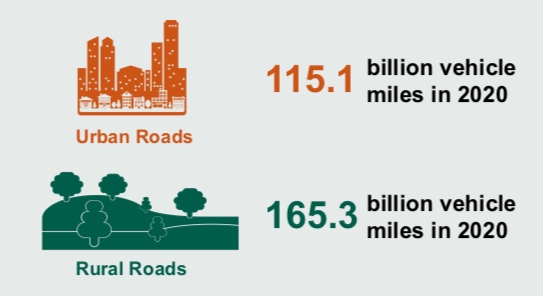
In March 2020, the Secretary of State for Transport said “Public transport and active travel will be the natural first choice for our daily activities. We will use our cars less and be able to rely on a convenient, cost-effective and coherent public transport network.”
This begs the question how much less will we use our cars?
This is important because, based on recent studies, the shift from petrol and diesel to electric vehicles will not be sufficient for the UK to reach net zero emissions by 2050.
Key Points
- Based on Transport for the North analysis, road transport emissions will need to be 56% lower in 2030 compared to 2018, and 96% lower by 2040, to achieve net zero by 2050.
- A substantial > 20% and potentially up to 50%, reduction in vehicle miles driven is needed across the UK by 2030 to achieve these reductions.
- Reductions will need to be greater in urban areas where there are more viable alternatives to driving than in the countryside.
- National UK transport budgets are still based on a forecast that traffic will grow between 17% and 51% by 2050, relative to 2015, increasing CO2 emissions by millions of tonnes.
- To achieve its target of net zero by 2030, Newcastle City Council will need to set a target for traffic reduction and act quickly to reduce miles driven and enable alternative low-carbon options for travelling like walking, cycling and zero-carbon public transport.
Traffic Reduction and Carbon Budgets
Many transport organisations across the UK are looking at how to support the UK target to achieve Net Zero by 2050 and limit global warming to 1.5°C. We have previously responded to consultations from Newcastle City Council, Transport for the North East and Transport for the North.
A key concept in achieving net zero is the carbon budget. This is the maximum total CO2 emissions possible while still limiting global warming to 1.5°C. At 1.5°C there would still be “increasing heatwaves, more intense storms, and more serious droughts and floods, but would represent a much smaller risk than 2°C.”
Transport for the North have determined a Decarbonisation Trajectory that says how much of the transport carbon budget can be emitted each year up to 2050 and still meet the 1.5°C target. This shows that not only does the UK need to achieve net zero by 2050, but it also needs substantial short-term reductions in transport emissions, about 56% from 2018 by 2030.
Our Decarbonisation #Trajectory with the shape of the curve being dictated by a series of interim #emissions reduction milestones that ensure a rate of progress towards a #ZeroEemissions #transport system by 2050.
Discover more on #Decarbonisation https://t.co/QjuMSKIovN pic.twitter.com/18rV81E3Np
— Transport for the North (@Transport4North) December 10, 2021
Much of this 56% reduction will be achieved via the transition from petrol and diesel to electric vehicles. The remainder will need to be from switching journeys from driving to walking, cycling and public transport.
CREDS, the Centre for Research into Energy Demand Solutions say that “There are no future scenarios in which the UK can meet its carbon reduction milestones over the next two decades whilst car traffic is allowed to grow.” and that “This is true even if electric vehicle uptake is massively accelerated.” They also say that “plans to build more road capacity … will be a waste of resources in the face of the necessity of lower traffic growth.”
In it’s Review of Energy Policy 2021 the UK Energy Research Centre (UKERC) concluded that “a 30-50% reduction in car kilometres is needed by 2030, relative to 2020, to meet the UK’s 6th Carbon Budget.” (Link to the report)
Other UK cities and regions have produced similar analyses:
- The Scottish Government have determined a 20% reduction in kilometres is needed by 2030, relative to 2019, to meet Scotland’s net zero target by 2045.
- Transport for London have concluded that to meet climate change targets, car traffic must reduce by at least 27% in London by the end of this decade.
- The Welsh Government has announced a freeze on new road building and a commitment to reduce overall car miles by 10% by 2030.
- Transport for the West Midlands has estimated that a reduction of car mileage by approximately 58% between 2020 and 2031 will be required.
- Glasgow City Council is planning to cut car use by 30% by 2030.
- Get one in four cars off the roads by 2030, say Oxfordshire County Council
Transport Quality of Life have looked at these figures in a report concluding that climate targets won’t be met unless the UK significantly reduces traffic over the next ten years, and concludes that “Cars, which are the main source of transport carbon dioxide (CO2) emissions, will have to achieve even greater emissions reductions by 2030 to compensate for the road freight, maritime and aviation sectors where technological solutions are some way off.”
To a large extent the reduction required will be dependent on the speed of uptake of Electric Vehicles, which itself will be dependent on future availability and affordability of EVs. Green Alliance, an independent think tank and charity focused on environment has produced a report outlining a number of different scenarios showing fast, medium and slow uptake of EVs and what reduction in miles driven would be required as a result.
We’re aiming to reduce the number of kilometres travelled by car in Scotland by 20% by 2030.
That requires a big modal shift in how people travel, so we’re investing in a greener, decarbonised public transport network.#ScotBudget | #LetsDoNetZero pic.twitter.com/EXCjuTB1jf
— Transport Scotland (@transcotland) December 13, 2021
Update October 2023 – France follows Wales in stopping major road projects.
France just followed Wales in stopping major road projects, viewing public transport investment as the future.
Meanwhile @Keir_Starmer lauds road-building as "Britain's future" at Labour conference, just as climate breakdown accelerates. Some dream.https://t.co/rnyN7muNnQ https://t.co/YAOf6ncByS
— Rafe Smyth (@safemyth) October 10, 2023
Update November 2023 – New report says “Electric vehicles are not enough to meet net zero”
The report, a collaboration between University of Leeds, Stantec, DecarboN8, Transport for the North (TfN), Transport for Greater Manchester and Bury Council, Newcastle University and the University of Lancaster, finds that “A reduction in travel by car, or equivalent, of at least 20%, (30% for DD), is required by 2030 to meet surface transport net zero”
The Bridging the Gap report is an excellent piece of collaborative work and we're proud to have been part of it.
The research by @Stantec and @N8Decarbo suggests people and place considerations are crucial if we are to meet #TransportDecarbonisation targets. https://t.co/iTWDA97EIF
— Transport for the North (@Transport4North) November 23, 2023
The Office of Budget Responsibility has also reduced its forecast of EV uptake from 67% of market share by 2027 to 38%. This is already factored it in to the Reverse Gear report on
CREDS UK website. This report shows that “pathways that achieve the Government’s aim on electrification could still be consistent with the CCC’s Balanced Pathway if a 20% reduction in road traffic levels were also to be achieved by 2030 relative to current plans.”
Rural vs Urban
In 2020, driving on rural roads was about 165 billion vehicle miles vs 115 billion on urban roads, a total of 280 billion. This is down from 357 billion miles in 2019. A further 30-50% reduction by 2030 would mean cutting this by 84 and 140 billion miles – more than the entire amount currently driven in urban areas.
While some of this reduction will have to come from rural areas, the majority will have to be from urban areas where there are more viable alternatives to car travel.
Fortunately, the principle of traffic reduction is very popular with the public and seen as a priority. Unfortunately the details of making it happen in practice are much more challenginghttps://t.co/OnwVA5aKwX
11/n pic.twitter.com/C69dRZvpZJ— Leo Murray @crisortunity@urbanists.social (@crisortunity) November 28, 2021
The obvious priority is short journeys in urban areas. In the North East 37% of car journeys are under 5km (3 miles) and many of those could easily be walked or cycled.
Did you know that 37% of North East car journeys are under 5KM in distance?
Imagine the difference we could make to the environment if we swopped even 5% of those journeys to walking or cycling!
Use our cycling and walking maps to plan your routes: https://t.co/2D1kgvTfzY pic.twitter.com/Ed3Na2bmV0
— Go Smarter Go Active (@Go_smarterNE) November 27, 2021
Across the North as a whole, Transport for the North say “Just under 90% of car trips are under 10 kilometres.” 10km cycling takes about 30 minutes where there there are safe, direct routes, potentially quicker if using an e-Bike.
Investment is urgently required to reallocate road space currently used for vehicle traffic to public transport and to create a network of safe walking and cycling routes. Based on the analyses we have shared in this blog, these investments need to happen quickly and at a large scale right across the city.
Where’s the Money?
The UK’s Road Investment Strategy and associated budgets are still based on forecasts of increasing vehicle miles driven, completely the opposite to what is needed to meet the UK’s net zero targets.
A new Government commissioned report on ‘Union Connectivity, predicts a 51% increase in road traffic volumes, between 2015 and 2050.https://t.co/HhIzUoDt0c pic.twitter.com/yqHoQ2X7RF
— APPG for Cycling & Walking (@APPGCW) November 26, 2021
These increasing forecasts are based on a 2018 Department for Transport report saying “Traffic in England and Wales is forecast to increase across all scenarios, but the size of that growth depends on the assumptions made about the key drivers of future road demand. From 2015 traffic is forecast to grow by between 17% and 51% by 2050.” (paragraph 13)
To a large extent, what actually happens will be the result of government policy. The 51% increase quoted in the recent “Union Connectivity Review” assumes no tax additional tax on electric vehicles or road pricing, i.e. driving will remain much cheaper for drivers of electric vehicles. If the Government does apply a tax to vehicle journeys, to reverse the long-term trend where driving has become much cheaper than public transport, that should substantially reduce demand for driving.
The Government could, rather than spending £27 billion on building more roads, instead invest that in walking, cycling and public transport in support of its Net Zero target.
As well as benefiting the environment and public health, this would benefit the economy by reducing the cost of travel. The Scotsman reported that individual savings from cycling are equivalent to a 8% pay rise.

A local Dutch supermarket showing cycle parking for customers and a traffic-free cycle path
What’s Next?
Nationally, it is likely the Government will look seriously at road pricing to replace Fuel Duty and discourage excessive vehicle travel.
Newcastle City Council needs to move even more quickly to achieve net zero by 2030, and needs to set out plans for how to reduce miles driven and achieve mode-shift targets.
Confirmation that local bridges will remain open for walking and cycling, but not vehicle traffic, is a great start. Achieving the required reduction in vehicle use will need more changes like these, as well as school streets and protected cycle lanes on main roads, to give residents a range of viable alternatives to driving.
Notes
Data showing how traffic has increased over time is available from the Department for Transport Website.
The Government published its Transport decarbonisation plan in July 2021.
Transport for the North has also published a Decarbonisation Strategy.
Newcastle City Council’s 2030 net zero plan can be viewed on its Climate View website.



New Zealand aims to reduce the total kilometres light vehicles travel by 20% by 2035
https://www.theguardian.com/world/2022/may/16/help-to-buy-evs-in-landmark-new-zealand-net-zero-climate-plan
12 best ways to get cars out of cities – ranked by new research
https://theconversation.com/12-best-ways-to-get-cars-out-of-cities-ranked-by-new-research-180642
Car parking curbs and cutting mileage by 20% among Coalition plans to reduce emissions – Irish Times
“there will be a push to drive down the total amount of driving done across society, with a target for 2030 of a 20 per cent reduction in total vehicle kilometres, car kilometres and “commuting” car kilometres. ”
https://www.irishtimes.com/politics/2022/12/21/coalition-plans-to-clip-emissions-by-curbing-car-parking-and-cutting-mileage-by-20/
Shifting towards healthier transport: carrots or sticks? Systematic review and meta-analysis of population-level interventions
https://www.sciencedirect.com/science/article/pii/S2542519622002200
Reverse gear: The reality and implications of national transport emission reduction policies
This report shows that pathways which achieve the Government’s aims on electrification could still be consistent with the CCC’s Balanced Pathway if a 20% reduction in road traffic levels were also to be achieved by 2030 relative to current plans. The policy goal in Scotland is for an absolute reduction in car kilometres of 20% by 2030, although progress against the goal is yet to be substantially realised. Such an outcome cannot be wished for; it needs to be made to come about.
https://www.creds.ac.uk/publications/reverse-gear-the-reality-and-implications-of-national-transport-emission-reduction-policies/